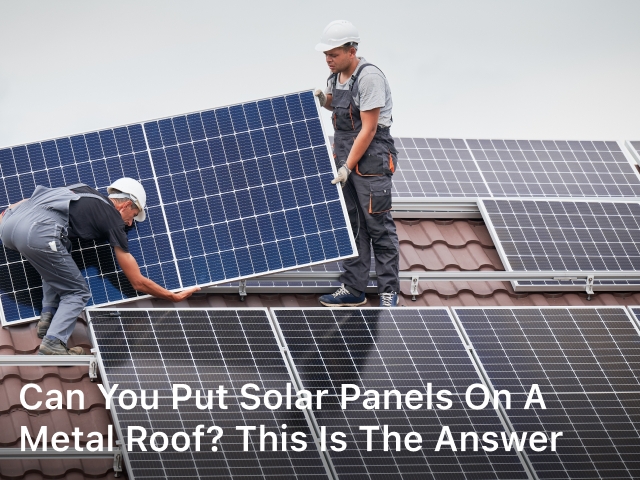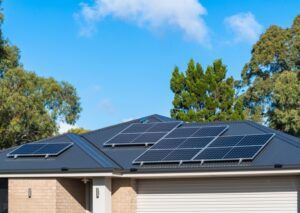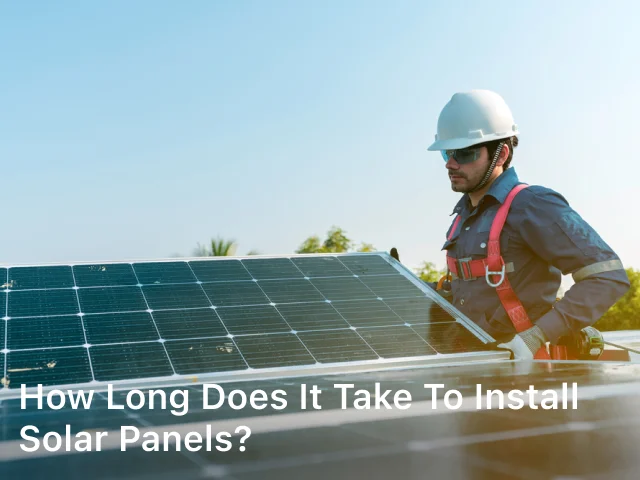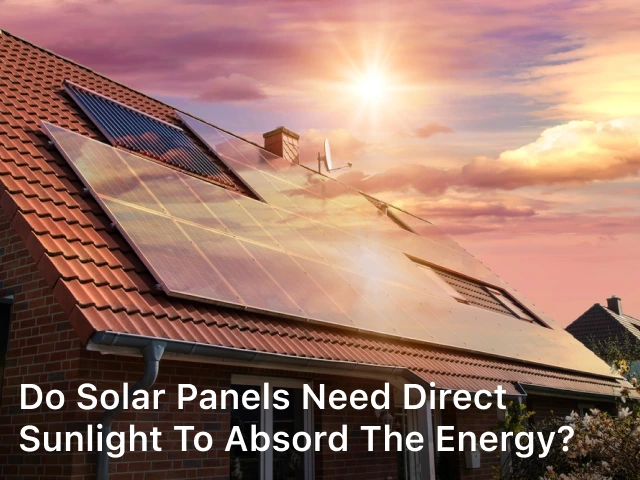Can you Put Solar Panels on a Metal Roof? This is The Answer

Can you Put Solar Panels on a Metal Roof? This is The Answer – Ever wondered, ‘Can you Put Solar Panels on a Metal Roof?’ Discover the truth with us as we delve into the pros and cons of this popular question.
Are you considering installing solar panels on your metal roof? It’s a common question, and for good reason. Solar panels are a fantastic way to save money on energy costs and reduce your carbon footprint. But the question remains – can you put solar panels on a metal roof?
In short, the answer is yes! Metal roofs can provide an excellent platform for solar panel installation. However, there are some important considerations to keep in mind before embarking on this project.
In this article, we’ll explore the advantages and disadvantages of installing solar panels on a metal roof, as well as important factors to consider before making a decision.
Key Takeaways:
- Yes, you can install solar panels on a metal roof.
- Metal roofs can provide a stable and durable platform for solar panel installation.
- Before making a decision, it’s important to consider factors such as roof pitch, orientation, and shading to ensure optimal efficiency.
- Working with a professional is crucial to ensure a successful and safe installation.
Pros of Installing Solar Panels on a Metal Roof
If you’re considering installing solar panels on your roof, using a metal roof may provide numerous benefits. Below are the top advantages of this option:
1. Stability and Durability
A metal roof provides a stable and durable platform for solar panel installation. Unlike asphalt shingles, metal is less likely to crack or deteriorate under the weight of solar panels. By choosing a metal roof, you can ensure your solar panels will have a long-lasting foundation for years to come.
2. Energy Efficiency
Metal roofs can also help improve energy efficiency. They reflect sunlight, reducing the amount of heat that enters your home and lowering your dependency on air conditioning. By pairing solar panels with a metal roof, you can enhance this energy-saving effect and reduce your utility costs.
3. Cost Savings
Using a metal roof for solar panel installation can also save you money in the long run. Metal roofs are low maintenance, meaning you’ll spend less on repairs and replacements compared to other roofing options.
Additionally, you can take advantage of federal tax credits and other incentives for homeowners who install solar panels, further reducing the overall cost of your project.
Installing solar panels on a metal roof can provide numerous benefits, including stability and durability, energy efficiency, and cost savings.
Considerations for Installing Solar Panels on a Metal Roof
When deciding whether to install solar panels on your metal roof, it is important to consider a few key factors to ensure optimal efficiency and effectiveness. Here are some important considerations:
- Roof Pitch: The pitch of your roof can affect the amount of sunlight your solar panels receive. A steeper pitch is typically more ideal for solar panel installation, as it allows for greater exposure to the sun’s rays.
- Orientation: Depending on your location, the angle and orientation at which your solar panels are installed can impact their energy output. In the Northern Hemisphere, south-facing roofs typically receive the most sunlight.
- Shading: Any shading on your metal roof can significantly reduce the effectiveness of your solar panels. Be sure to assess the surrounding trees, buildings, or other obstacles that could cast shade on your roof.
By taking these considerations into account, you can ensure that your solar panel installation is optimized for maximum energy efficiency.

Challenges of Installing Solar Panels on a Metal Roof
While there are many benefits to installing solar panels on a metal roof, it’s important to consider the potential challenges that may arise. These challenges can include:
| Challenge | Description |
|---|---|
| Potential roof damage | Installing solar panels on a metal roof requires drilling holes for the mounting brackets, which can compromise the roof’s integrity if not done correctly. |
| Proper installation techniques | Properly installing solar panels on a metal roof requires specific knowledge and experience. If installed incorrectly, the panels may not function properly or even fall off the roof. |
| Professional installation | Working with a professional solar panel installation company is crucial to ensure a safe and successful project. Attempting to install solar panels on a metal roof without professional help can result in injury or damage to your property. |
By being aware of these challenges, you can take the necessary precautions to ensure a successful solar panel installation on your metal roof. It’s important to work with a professional, experienced installer who can help you address these challenges and ensure a safe and successful project. With the right expertise and preparation, you can enjoy the benefits of solar energy on your metal roof for years to come.
Roof Compatibility and Preparation for Solar Panels
Before installing solar panels on your metal roof, it’s important to ensure that your roof is compatible with this type of installation. A thorough roof inspection should be conducted to assess the structural integrity and capacity of the roof to support the weight of the panels. In some cases, roof reinforcement may be necessary to ensure a secure and long-lasting installation.
Once the roof compatibility has been established, preparation for the solar panel installation should begin. High-quality mounting equipment specifically designed for metal roofs should be used to avoid damaging the roof’s surface. Proper sealing should also be applied around the mounting equipment to prevent water leakage and maintain the roof’s integrity.
It’s important to note that the pitch and orientation of the roof may affect the solar panel’s efficiency and effectiveness. Ideally, the roof should have a pitch of at least 10 degrees and face south to maximize solar exposure.
Additionally, shading from nearby trees or buildings may also impact solar panel performance, so it’s important to consider these factors when selecting the installation location.
Working with a professional installer experienced in solar panel installation on metal roofs can ensure proper preparation and installation. They can provide guidance on the necessary steps to ensure a successful and safe project, as well as identify and address any potential complications that may arise.
What is the best way to attach solar panels to a metal roof?
Attaching solar panels to a metal roof requires careful planning and installation to ensure both the structural integrity of your roof and the efficiency of your solar system. Here’s a step-by-step guide on the best way to attach solar panels to a metal roof:
Assessment and Planning:
- Evaluate your roof’s condition: Ensure your metal roof is in good condition, free from rust, and capable of supporting the weight of the solar panels.
- Check local regulations: Familiarize yourself with local building codes and regulations governing solar panel installations. Obtain any necessary permits.
Selecting Mounting System:
Choose the appropriate mounting system: There are different types of mounting systems, such as rail-based, rail-less, and ballasted systems. The choice depends on your roof type and personal preference.
Gather Materials:
Acquire the necessary materials, including solar panels, mounting brackets or rails, roof flashings, roof attachments, bolts, and sealant/adhesive.
Safety Precautions:
Ensure safety gear: Use proper safety equipment, including harnesses, helmets, and gloves, to prevent accidents during installation.
Locate Roof Rafters or Purlins:
Identify the roof’s structural supports, such as rafters or purlins, where you’ll anchor the mounting system. This ensures a secure attachment.
Roof Penetrations:
Use appropriate flashing: Install roof flashings at attachment points to prevent water leaks.
Seal penetrations: Apply a high-quality sealant, such as roofing caulk or butyl tape, around attachment points to create a watertight seal.
Mounting Solar Panels:
- Attach mounting brackets or rails to the roof structure using appropriate fasteners. Ensure they are securely anchored to the structural supports.
- Place the solar panels onto the mounting system and secure them according to the manufacturer’s instructions.
Wiring and Electrical Connections:
Connect the solar panels to the electrical system following the manufacturer’s guidelines. This typically involves wiring them in series or parallel to achieve the desired voltage and current.
Inverter Installation:
Install the inverter, which converts the DC power generated by the panels into usable AC power for your home.
Final Inspections and Testing:
Have your installation inspected by a qualified professional if required by local regulations.
Conduct a system test to ensure all panels are functioning correctly and producing power as expected.
Regular Maintenance:
Periodically inspect the system for loose bolts, damaged panels, or any signs of wear and tear. Keep the panels clean to maintain their efficiency.
Monitoring and Maintenance:
Set up a monitoring system to keep track of your solar panel’s performance and energy production.
It’s essential to hire a professional solar installer or contractor with experience in metal roof installations if you’re not confident in your ability to do it yourself. They can ensure the installation is done correctly and safely while adhering to local building codes and regulations.
What type of metal roof is best for solar?
When considering a metal roof for a solar panel installation, it’s essential to choose the right type of metal roofing material that will provide both durability and compatibility with solar panels. The best metal roof types for solar installations are typically:
Standing Seam Metal Roofs:
- Standing seam roofs are one of the most popular choices for solar installations. They have raised seams that run vertically along the roof, providing a secure and easy-to-install attachment point for solar panel mounting systems.
- The raised seams allow for easy integration of solar panel mounting brackets or rails without penetrating the roof’s surface, reducing the risk of leaks.
- Standing seam roofs are often made from materials like steel, aluminum, or copper, which are known for their longevity and resistance to corrosion.
Metal Shingle Roofs:
- Metal shingle roofs offer a more traditional look while providing the benefits of a metal roof.
- They are usually designed with interlocking systems that provide a stable surface for mounting solar panels.
- Metal shingles are available in various styles and colors, allowing for aesthetic customization while accommodating solar panel installations.
Metal Tile Roofs:
- Metal tile roofs mimic the appearance of traditional clay or concrete tiles but are made of metal.
- These roofs can be suitable for solar panels when designed with attachment points compatible with solar mounting systems.
- Metal tiles are often lightweight and durable, making them a good choice for solar installations.
Corrugated Metal Roofs:
- Corrugated metal roofs have a wavy or ribbed profile and are commonly used in agricultural and industrial settings.
- While they are more challenging to install solar panels on due to their profile, it is still possible with the right mounting system and installation expertise.
- Corrugated roofs are typically made of steel or aluminum and can be a cost-effective option.
Custom Metal Roof Systems:
- In some cases, custom-designed metal roof systems may be used to optimize solar panel installations.
- These systems are engineered to integrate seamlessly with solar panels, ensuring a secure and watertight installation.
Ultimately, the choice of metal roofing material for your solar installation should consider factors like your aesthetic preferences, budget, local climate, and the expertise of your installer.
Whichever type of metal roof you choose, it’s crucial to work with a professional solar installer who is experienced in mounting solar panels on metal roofs. Proper installation is essential to ensure the longevity of both the roof and the solar system while maintaining the roof’s integrity and preventing leaks.
Conclusion
Putting solar panels on a metal roof is a feasible option for homeowners looking to harness solar power. However, it’s important to consider the roof’s pitch, orientation, and shading to ensure efficient and effective panel placement.
One of the biggest advantages of using metal roofs for solar panel installation is the durability and stability they offer. Not only can this lower your energy bills, but it can also increase your property’s value.
Yet, it’s crucial to recognize that some challenges may arise during installation, such as potential roof damage or improper installation techniques. That’s why it’s highly advised to work with a professional to ensure a successful project.
Final Thoughts
Overall, installing solar panels on a metal roof is a promising and eco-friendly choice for homeowners. By following proper preparation and installation techniques, you can enjoy the cost savings and energy efficiency benefits of solar power while maintaining your roof’s integrity.
At the end of the day, the decision to install solar panels on a metal roof ultimately depends on your specific situation and needs. We hope this article has helped you understand the advantages and considerations of this option and has empowered you to make an informed decision.





